When I was diagnosed with type 1 diabetes 22 years ago, I never thought that a tubeless, automated insulin delivery (AID) system would ever be possible.
At 12 years old, I was handed a syringe, a few vials of NPH and R insulin (pork insulin), and was told to test my blood sugar 10 or more times per day and hope for the best. It was brutal.
Decades later, technology has come a long way, to say the least.
I can now bolus insulin remotely, check my blood sugar seamlessly by glancing down at my smartphone, and with the newest Omnipod 5 system, not worry so much about high and low blood sugar levels.
The system is automatically adjusting my basal insulin rates for me, according to what my blood sugar is, all in real-time.
This article will discuss the new Omnipod 5 system, my first impressions, and what you can expect if you choose this system for yourself.
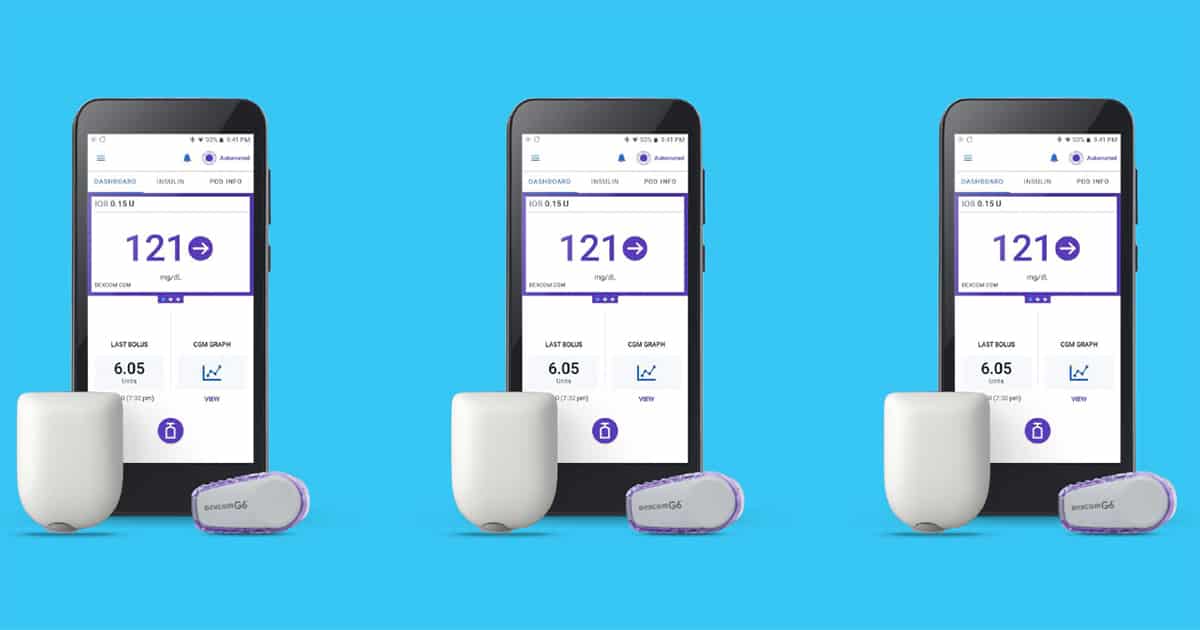
A short history of automated insulin delivery (AID)
Automated insulin delivery, or AID for short, has been the holy grail in the diabetes community for a long time.
Even with traditional insulin pump therapy, people with insulin-dependent diabetes are often walking a tightrope of managing stubborn highs and scary lows, often feeling imprisoned by their blood sugar levels.
AID offers hope to minimize not only the highs and lows, but to lighten the mental burden of a life lived with diabetes.
People with diabetes in the #WeAreNotWaiting movement have been hacking their old insulin pumps for years to achieve hybrid-closed loop systems, but these were never approved by the Food and Drug Administration (FDA), and were not recommended by physicians, nor had any safety guarantees.
The first system to receive approval from the FDA, Medtronic’s 670g, became available in the United States in late 2016. This system made automatic adjustments to basal delivery based on Medtronic’s own continuous glucose monitoring (CGM) system, The Guardian, and was extremely popular.
That was quickly followed by the Tslim Control IQ system from Tandem that became available in the United States in early 2020, which was the first AID system to work with the Dexcom CGM system, and did not require fingerstick calibrations (unlike the Medtronic system, which requires calibrations every 12 hours).
The Guardian CGM needed to be changed every 7 days, whereas the Tslim system, using the Dexcom CGM, only needed changes every 10 days.
While people were very excited about these systems, millions were holding out hope for the (then-called) Omnipod Horizon system by Insulet.
This system would be unique in the fact that it would be the first ever tubeless AID system, all run by Bluetooth.
Many people prefer the Omnipod system as it gives more freedom to exercise and feel more free, due to the lack of tubing. One also does not need to suspend insulin when doing things like showering or swimming.
The Horizon system, now called Omnipod 5, was slated to be approved by the FDA in 2020, but the COVID-19 pandemic soon caused a major bottleneck in the approval process and it was repeatedly delayed, to much dismay.
Finally, on January 28th, 2022, the FDA announced its approval of the Omnipod 5 system: the first ever tubeless AID system (hybrid-closed loop). The approval is for people with type 1 diabetes aged 6 years and older, and is compatible with Android smartphones and the Dexcom G6 CGM system.
Insulet conducted a limited release in February, with an expected market release in March 2022.
How the Omnipod 5 works
It’s important to note that this is a hybrid-closed loop system, and users still need to count carbohydrates and bolus insulin for all meals and snacks.
You also need to let the system know when you plan on exercising, and there’s an activity feature where you can reduce your insulin needs while you’re physically active.
The AID system will, however, automatically adjust basal insulin rates according to blood sugar readings twenty four hours a day.
The system is similar to their earlier versions, where a pod needs to be replaced and filled with insulin every 72 hours, and functions with the Dexcom G6 CGM, which needs to be replaced every 10 days.
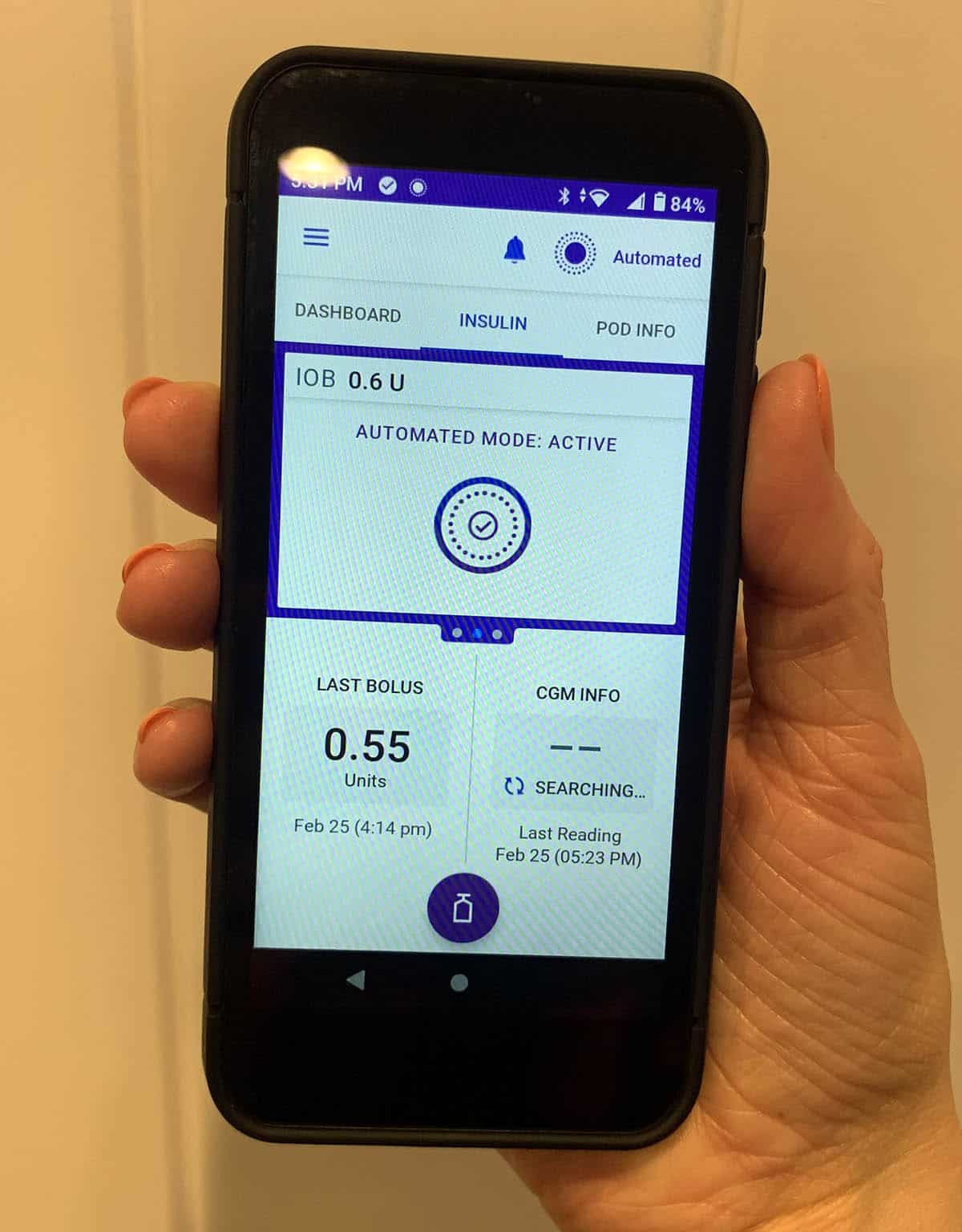
My first impressions
I was lucky to be part of the limited release group and received the Omnipod 5 system on February 11th, 2022.
My first impressions were that the personal diabetes manager (PDM) looks like a smartphone (probably because it is one), and the pods (self-contained insulin reservoirs) look remarkably similar to earlier versions of the Omnipod (both the Erros and the DASH use pods).
The pod now “talks” to the Dexcom CGM sensor, so your basal rates will adjust automatically even if your PDM isn’t nearby (you only need it near you to bolus). Alternatively, if you use an Android phone, there is a compatible app that you can use for your PDM instead, and bolus straight from your smartphone (how cool is that?!). Since I use an iPhone, I opted for the traditional PDM.
There is word that an iPhone-compatible app is forthcoming.
I had a two-hour training session and quickly jumped into auto mode (why wait?). It’s been fantastic.
I’ve only been on the system for two weeks, but I’ve already noticed a few significant improvements to my health.
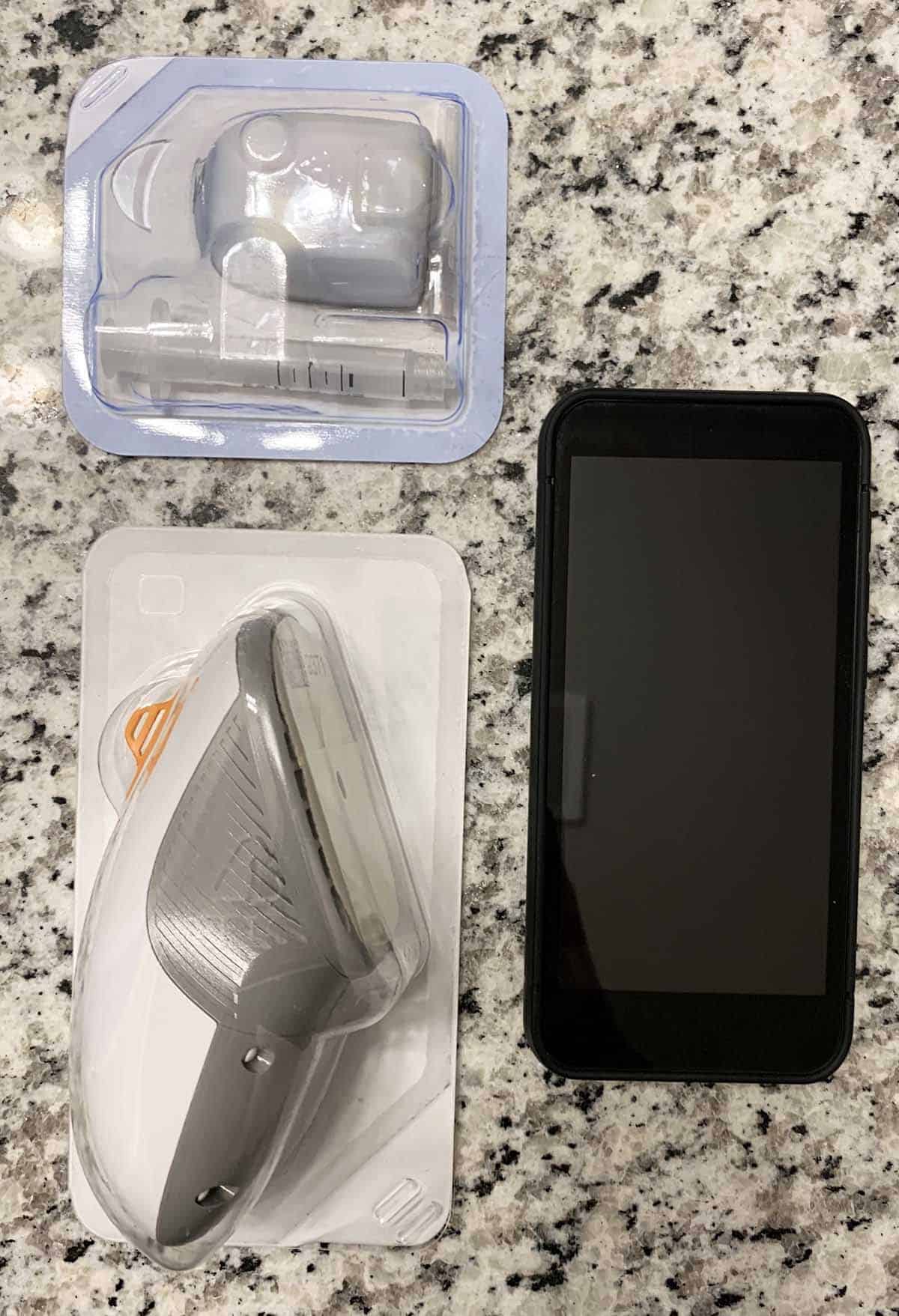
Improved sleep quality
After switching into auto mode, I bolused for a normal dinner, ate, and got ready for bed.
Like many people with diabetes, I’m used to not always getting much sleep at night. Between low and high blood sugars and their accompanying alerts and alarms, I often wake up between 1-4 times at night.
If I’m not woken up by any alarms, I usually am thirsty or need to pee at least once, so when I awoke the next morning, after a solid 8 hours of sleep UNINTERRUPTED, I was ecstatic.
I took a quick look at my Dexcom graph and saw that my blood sugar stayed between 110-130 all night long, and I had no highs and no lows.
Most of my nights look like this now, and the feeling of being fully rested is incredible. It is a complete joy to feel like diabetes isn’t stealing my sleep as much as it used to, and sleeping through the night is definitely something that I’m looking forward to getting used to!
Fewer exercise disruptions
I am an avid athlete who exercises between 6-7 times per week. I love running, hiking, swimming, cycling, and weightlifting, and one of the most frustrating aspects about diabetes is how often low blood sugars seem to get in my way.
I also dislike having to eat before exercise, because if I’m trying to lose weight, it can sometimes feel as though I’m defeating the purpose.
I used to go low while exercising nearly daily. Well, since being on the Omnipod 5, I have had one low blood sugar in the two weeks that I’ve been wearing the device. One!
The system lets you set a target blood sugar (in my case, I set it to 150 mg/dL), and it decreases your basal rate (or pauses insulin delivery) until it can predict you will reach that higher number.
You can set the amount of time you’d like to be in the “activity feature”, anywhere from 1-24 hours, and it will automatically expire, so if you forget to turn it off after you’re done, you don’t have to worry about higher blood sugars later on.
Each day, I set my activity feature to “on” about 45 minutes before I begin my exercise routine, and it smoothly will elevate my blood sugar just enough so I don’t crash, and then after I’m done, will bring it back down to a normal range. That has been amazing.
Less mental burden
Overall, being on the Omnipod 5 has lessened my mental burden of living with type 1 diabetes.
One study has shown that people with diabetes make an extra 180 decisions nearly every single day just to take proper care of themselves, and having an AID system feels like those decisions have been cut in half.
I don’t need to micromanage my basal rates during the day, and I’m not waking up to low alarms at midnight in order to pause insulin and have some juice anymore. I’m sleeping better than ever before.
Exercise is a breeze (and I can finally exercise without such a fear of going low!).
And while dosing insulin for meals feels just about the same as it always had (you still have to count carbohydrates and bolus for meals and snacks), I know the system will supplement with extra basal insulin if I’ve undercounted my carbohydrates to prevent a high, or will decrease insulin if I’ve taken too much by accident, to prevent a low.
While diabetes will always be a mental burden on those who live with it (and their families!), having an AID system significantly decreases that burden.
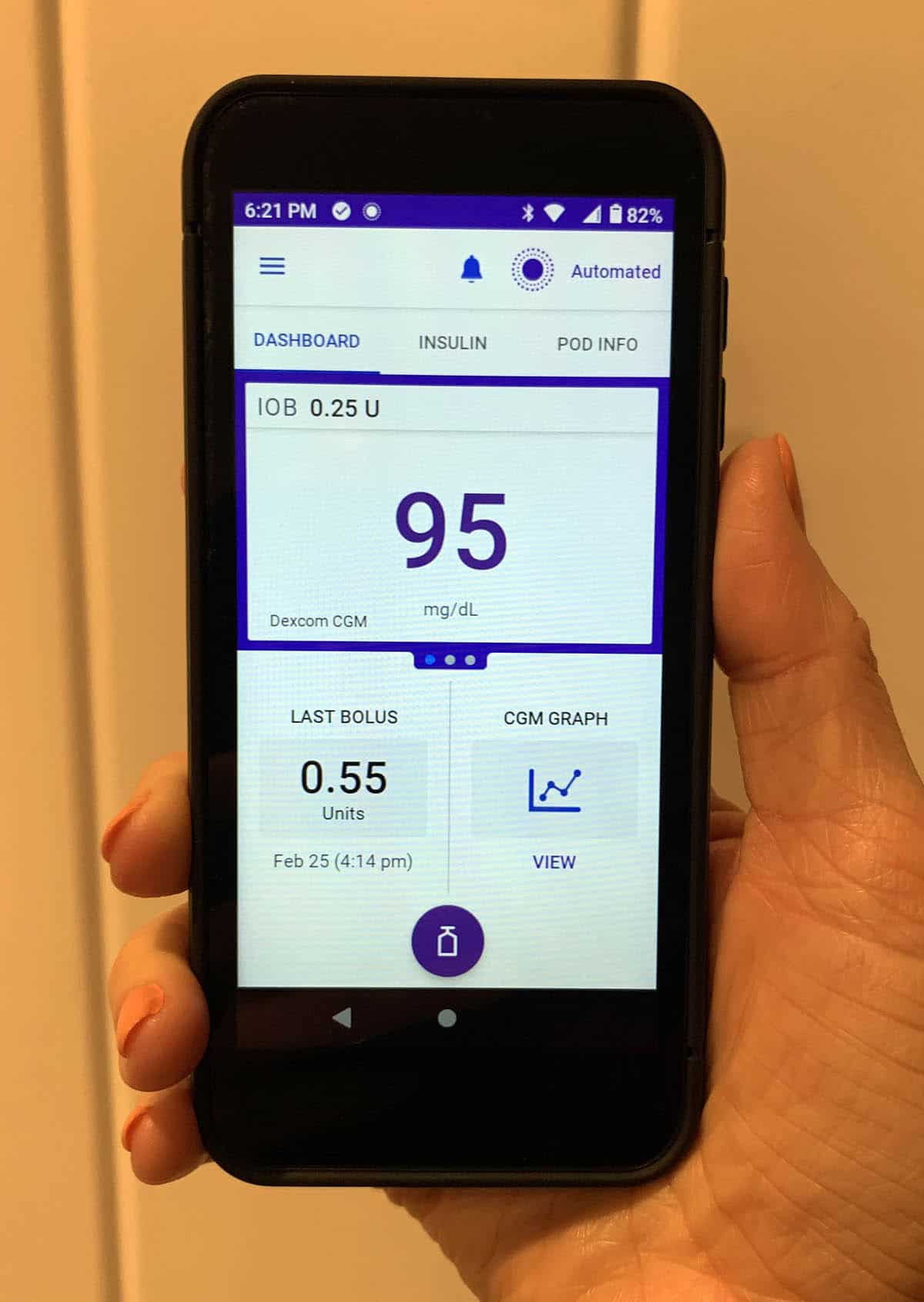
Conclusions
While automated insulin delivery (AID) systems are still not a cure for diabetes, I have found that the Omnipod 5 system has significantly improved my sleep quality, my ability to exercise, and has decreased the mental burden I experience as a woman living with type 1 diabetes.
It is, however, still an external medical device: you can experience bad pump sites, occlusions, injecting into scar tissue, and failed adhesives.
You will still experience both high and low blood sugar levels, and while sleep quality may be significantly improved, you will still probably have to pee in the middle of the night from time to time. CGMs will error out and give false readings.
You need to literally plug your “pancreas” in nightly (the battery can last an average of 48 hours), and may run out of battery if you’re without power for extended periods of time.
Nothing is perfect. But while we wait for the ever-evasive cure, this is one step closer to it.

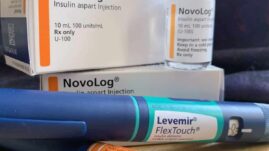

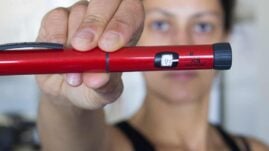
Melinda
So can anyone help and give me any input on what may be happening. My daughter has been on the omnipod 5 for a few days now but we just had a weird issue that says she put in a bolus of 20 units given with a sugar of 204 and no food being consumed. Has anyone had this issue or could my child b doing this for attention
Christel Oerum
Unless her insulin sensitivity factor/correction factor is set to 5, the system shouldn’t give her that high of a correction. I would look at her settings and see if somehow it has been set to 5 instead of (maybe) 50 or higher
Kendra
I’ve been on the Omnipod 5 for three days now, and my blood sugars have been much higher since the algorithm hasn’t adapted to my trends yet. How long did the Omnipod 5 algorithm take to conform to your body’s unique insulin needs? I was told it might take several weeks, which seems like a long time to have out-of-whack blood glucose levels. Any advice or words of encouragement?
Christel Oerum
It should start to adjust already after the first pod. But I would check if your settings need adjusting. For example, if you notice that it’s giving you maximum corrections (those show as orange bars if you look at your data in Glooko) and your blood sugars are still high your max. hourly basal might be set too low. It could also be a good question to send over to your endo or diabetes nurse
CD
Hi. We’ve had our 7 year old daugher on the Omnipod 5 for over a month now. It works relatively well during the day in auto mode, but if we leave it in auto mode at night her glucose levels drop way down even though the pdm shows insulin delivery was paused all night. We’ve started switching to manual mode when she goes to bed and switch back to auto mode when she wakes up. Manual mode, which has the basal program running in the background at minimal amounts, keeps her glucose levels at her target and her levels won’t drop like they do in auto mode. Omnipod reps were very helpful and resourceful when they were convincing us to go with their product, but they can’t explain why the manual and auto modes seem to work exactly the opposite way they should (i.e., insulin delivery paused in auto mode and her glucose drops, minimal delivery in manual mode and it doesn’t). All they’ll say now is call your doctor and maybe they can figure it out.
Our health care team is stumped, too. We’re trying to understand this. Have you had any experiences like this?
Christel Oerum
It’s not an issue I’ve heard before but I’ll leave your comment here and hopefully, someone else can chime in
Dimitrios Hantgos
Hi CD. I have been a Juvenile Diabetic since 18 months old, (for 45 years now). I also own an insulin pump. Blood glucose levels can vary from person to person when you sleep. Between the hormones, the sleep cycle, etc, some people can tend to run lower or higher at night. The best thing to do is to adjust the Basal Rate specifically at night. Lower it. Then if she has a bedtime snack before she goes to sleep, try to lower the bolus amount knowing she will be going to sleep. For the first week when you are making adjustments to the basal rate during sleep and the bolus amount, keep the snack exactly the same. This will make sure the food intake stays the same and eliminate one more variable you have to worry about. I hope this helps.
Eric
“…if we leave it in auto mode at night her glucose levels drop way down even though the pdm shows insulin delivery was paused all night.”
Most likely this is just a “compression low”. If she sleeps on her CMG sensor and compresses the area where the sensor is inserted, it can give a false low reading. The reason is that is the interstitial fluid is not active in the area because she is pressing down on it.
Try moving the location of the sensor to see if that helps!
Richard Feifer
I’m confused.
If sleeping on the CGM caused false lows, doesn’t that mean that your BS might be higher?
Christel Oerum
Yes, a compression low is a situation where the sensor falsely reads blood sugars lower than what they actually are
Devree
Hi! Can the Dexcom still be connected to your iPhone and the receiver at the same time? Or is it only connected to your receiver?
Christel Oerum
You can have it connect to both at the same time
John Z
Hi Christine, Great article, thanks! Just curious if you’ve learned any more features of the Omnipod 5 over the past few months. FYI Insulet is starting to roll it out to the general public now, I expect to be on it by late May 2022. I am especially curious about what the 5 does if you have a bad pod site as many of us experience on Day 3. Does it just keep increasing the basal and pumping away or does it give up and quit, with alarms etc.?
Christine Fallabel
The pump will give you an alarm if it’s been giving you your “max basal” for several hours without success (lowered bg). It will then recommend that you change your pod! I’ve been learning that meals are easier when I split my bolus (since there’s no extended bolus feature). Good luck and enjoy it!
Erika
Thank you for the article. Do you know if the PDM is larger than the dash PDM? Also, you mention a release date of March do you really think it will happen this month? It’s all very exciting!
Christian Karnov
When we started in February, the rep told us they had just rolled it out to 600 select users. She said those 600 need to log 10,000 hours of use before they will allow full rollout to the rest of us. She also said it would probably be a few months, but 10,000 hours is 417 days, so I’m betting the bulk of us won’t see this until Q2 2023. Christine, can you confirm this?
Christine
Can’t confirm! I hadn’t heard that.
Joan
Thank you for this review. I’m not currently on any pump and am considering this system this year. I have pretty tight control with MDI, but those night-time highs are killing my sleep. Can the auto setting be set lower? Like about 100 instead of 150?
Christel Oerum
Glucose targets are customizable in 10 milligram per deciliter (mg/dL) increments between 110 to 150 mg/dL
Ja’fr Yirka
I’ve heard Chistine mention before about pumps not including basal as part of insulin on board. The 5 does.
Jy
I meant Cristel.
Christel Oerum
That’s very cool!
Christine
You can set your goal bg as low as 110. Exercise mode sets your bg to 150.
Rita
I’ve been waiting literally years for this system, I’m really glad it is finally out! You mention the 48-hour charging period, would that also apply if I use my Android phone? I’m assuming that only refers to the PDM they provide.
Christine
Unsure! I believe it would only apply to the PDM and you charge your phone like normal 🙂
Christine
If you have an android phone, you would just charge it like normal, as the system is an app 🙂
Marybeth
I currently use Omni pod. Will I need to get new ones if I switch over? I am not on Dash. I currently have a iPhone.
Christine
Yes! The omnipod 5 has a new pod and the DASH doesn’t work with their AID system.
Rob B
Have you ever used Tslim or Medtronic AID’s? If so, how does it compare to one of those?
Thanks, Rob
Christine
Hello! I haven’t! But I’ve heard good things.